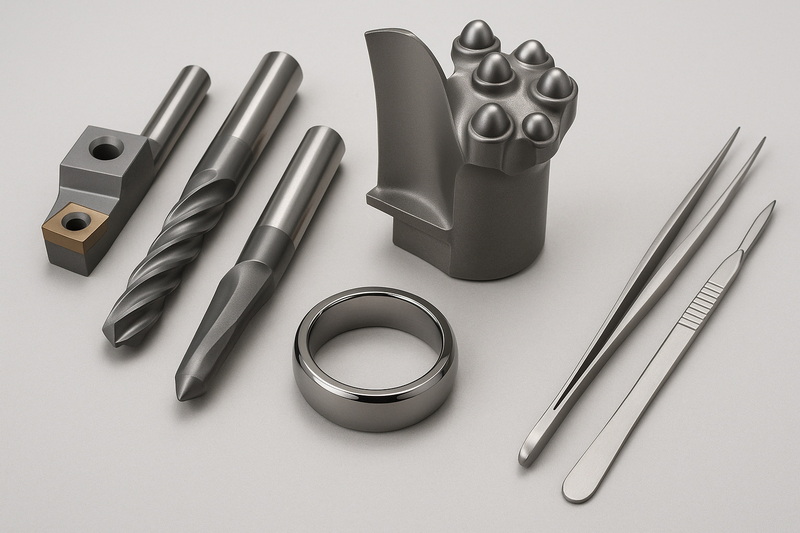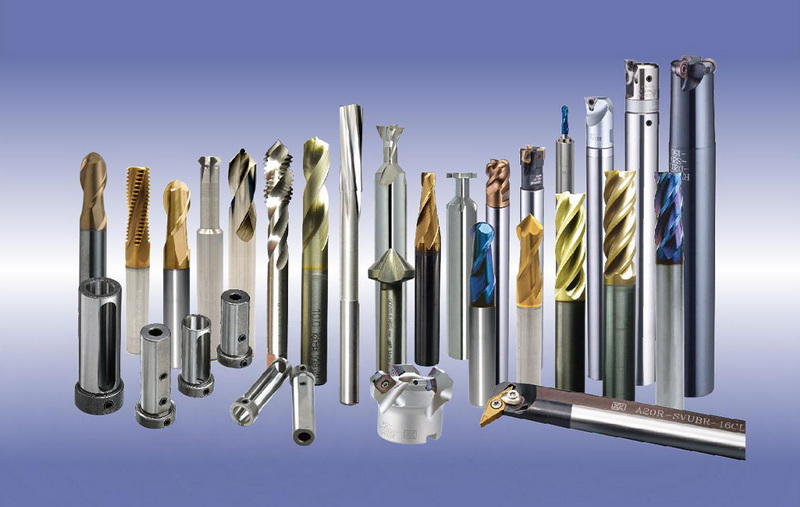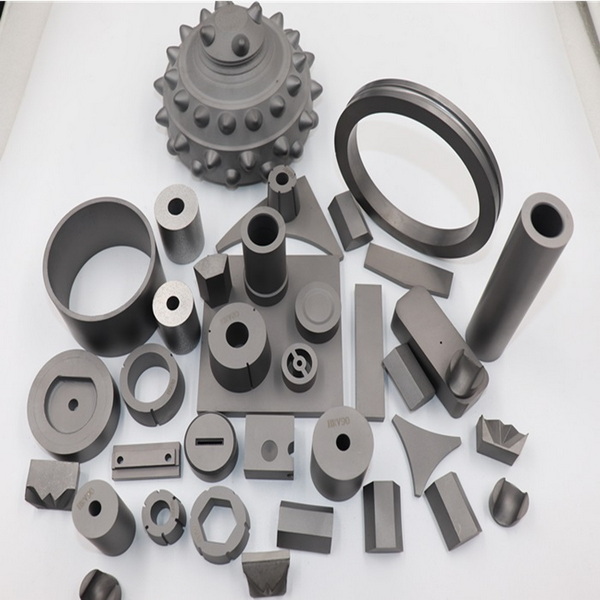Content Menu
● Introduction to Tungsten Carbide
● The Chemistry and Structure of Tungsten Carbide
● History of Tungsten Carbide
● Manufacturing Process: From Powder to Product
>> Powder Preparation
>> Mixing with Binders
>> Pressing and Sintering
>> Finishing
● Advanced Manufacturing Techniques
● Key Physical and Chemical Properties
>> Hardness
>> Strength and Toughness
>> Density
>> Thermal Properties
>> Chemical Stability
>> Electrical Conductivity
● Industrial and Everyday Applications
>> Cutting Tools and Machining
>> Mining and Drilling
>> Aerospace and Automotive
>> Jewelry and Fashion
>> Medical and Dental Instruments
>> Consumer Electronics
● Detailed Case Studies in Specific Industries
>> Aerospace Industry
>> Medical Industry
>> Mining Industry
● Comparison with Other Hard Metals
● Global Market Trends
● Safety and Environmental Considerations
● Conclusion
● FAQ: Five Key Questions About Tungsten Carbide
>> 1. What is tungsten carbide made of?
>> 2. How hard is tungsten carbide compared to other materials?
>> 3. What are the main uses of tungsten carbide?
>> 4. Is tungsten carbide brittle or tough?
>> 5. Can tungsten carbide be recycled?
Tungsten carbide stands as one of the most remarkable engineered materials in modern industry. Its unique blend of hardness, toughness, and versatility has led to its widespread use in manufacturing, mining, aerospace, medicine, and even jewelry. This comprehensive guide explores the nature of tungsten carbide, its history, how it is produced, its properties, and its vast range of applications. By the end, you will understand why tungsten carbide is considered a cornerstone of technological progress.

Introduction to Tungsten Carbide
Tungsten carbide is not a pure metal, but a compound formed from tungsten and carbon atoms. It is technically classified as a cermet—a composite material combining ceramic and metallic properties. This combination results in a material that is nearly as hard as diamond, while also retaining a degree of toughness and machinability. Tungsten carbide is often simply referred to as "carbide" in industrial settings.
The Chemistry and Structure of Tungsten Carbide
At the atomic level, tungsten carbide consists of equal parts tungsten (W) and carbon (C), chemically bonded in a hexagonal crystal lattice. This structure imparts exceptional rigidity and stability, making tungsten carbide highly resistant to deformation, wear, and high temperatures.
- Chemical Formula: WC
- Crystal Structure: Hexagonal
- Molecular Weight: Approximately 195.9 g/mol
The strong covalent bonds between tungsten and carbon atoms are responsible for the material's remarkable mechanical properties.
History of Tungsten Carbide
The discovery and development of tungsten carbide date back to the late 19th and early 20th centuries. The French chemist Henri Moissan first synthesized tungsten carbide in 1893 by combining tungsten and carbon at high temperatures. However, it was not until the 1920s and 1930s that tungsten carbide began to be produced on a commercial scale and found its way into industrial applications.
During World War II, tungsten carbide became a strategic material, used extensively in the manufacture of cutting tools and armor-piercing ammunition. Its exceptional hardness and wear resistance made it indispensable in the war effort and, later, in the post-war industrial boom. As industries grew and manufacturing processes advanced, tungsten carbide became a mainstay in machining, mining, and other high-wear applications.
Today, the evolution of powder metallurgy and composite materials continues to enhance tungsten carbide's properties and expand its uses. Innovations in manufacturing and processing have cemented its status as a cornerstone of modern industry.
Manufacturing Process: From Powder to Product
Powder Preparation
The journey of tungsten carbide begins with the production of a fine gray powder. This powder is created by reacting tungsten metal with carbon at temperatures between 1,400°C and 2,000°C. The resulting tungsten carbide powder is extremely hard and brittle.
Mixing with Binders
To make the material workable, the tungsten carbide powder is combined with a metallic binder, most commonly cobalt or nickel. The binder provides toughness and allows the powder to be shaped and sintered into solid parts.
Pressing and Sintering
The mixture is pressed into molds to form the desired shapes, then sintered at high temperatures (typically 1,400°C–1,600°C). During sintering, the binder melts and flows between the carbide grains, creating a dense, solid composite.
Finishing
After sintering, the parts are ground or polished to achieve precise dimensions and surface finishes. Only abrasives harder than tungsten carbide, such as diamond, can be used for this process.
Advanced Manufacturing Techniques
Modern manufacturing of tungsten carbide employs advanced powder metallurgy processes that further enhance its properties and expand its applications.
- Hot Isostatic Pressing (HIP): This technique applies high pressure and temperature uniformly, reducing porosity and increasing density. The result is a tougher, more reliable material.
- Spark Plasma Sintering (SPS): SPS uses pulsed electric currents to rapidly heat the powder compact, enabling faster sintering cycles and finer grain sizes. This leads to improved mechanical performance.
- Additive Manufacturing (3D Printing): Emerging technologies now allow for the 3D printing of tungsten carbide composites, enabling the creation of customized shapes and complex geometries previously unattainable with traditional methods.
These techniques contribute to longer tool life, higher precision, and open new possibilities in aerospace, medical, and electronics industries.
Key Physical and Chemical Properties
Tungsten carbide's exceptional performance is rooted in its unique physical and chemical characteristics.
Hardness
- Mohs Hardness: 9 (nearly as hard as diamond)
- Vickers Hardness: Around 2,600 HV
This makes tungsten carbide highly resistant to scratching, abrasion, and deformation.
Strength and Toughness
- Compressive Strength: Up to 6,000 MPa
- Transverse Rupture Strength (TRS): Can exceed 2,000 MPa, depending on binder content
Density
- Specific Gravity: 15.6 g/cm³ (about twice as dense as steel)
Thermal Properties
- Melting Point: Approximately 2,780°C
- Thermal Conductivity: 110 W/(m·K)
- Coefficient of Thermal Expansion: 5.5 μm/m·K
Chemical Stability
- Resistant to most acids except certain strong mixtures
- Begins to oxidize at temperatures above 500–600°C
- Highly stable in most industrial environments
Electrical Conductivity
- Electrical Resistivity: About 0.2 μΩ·m, similar to some metals
Industrial and Everyday Applications
Tungsten carbide's unique combination of hardness, toughness, and chemical stability makes it invaluable across diverse sectors.
Cutting Tools and Machining
Tungsten carbide is the gold standard for cutting tools—drills, end mills, inserts, and saw blades—used in high-speed machining, metalworking, and woodworking. Its ability to maintain sharpness and resist wear at high temperatures allows for faster, more precise manufacturing.
Mining and Drilling
Drill bits, auger teeth, and wear-resistant liners made from tungsten carbide are essential in mining, oil and gas, and construction. These components endure extreme abrasion and impact in harsh environments.
Aerospace and Automotive
Tungsten carbide coatings protect turbine blades, compressor seals, and other critical components from wear, erosion, and high-temperature damage in aerospace and automotive applications.
Jewelry and Fashion
Tungsten carbide's lustrous finish and scratch resistance make it a popular material for rings, bracelets, and watch bands. Its density and durability provide a unique feel and long-lasting appearance.
Medical and Dental Instruments
Precision surgical tools and dental burs often feature tungsten carbide tips, combining sharpness with corrosion resistance for enhanced performance and longevity.
Consumer Electronics
Some smartphones and wearable devices incorporate tungsten carbide for scratch-resistant components and decorative accents.

Detailed Case Studies in Specific Industries
Aerospace Industry
Tungsten carbide coatings are extensively used in turbine engines to protect components from extreme heat and erosion. Compressor blades coated with tungsten carbide exhibit significantly longer service life, reducing maintenance costs and improving engine efficiency. The material's ability to withstand high temperatures and abrasive environments makes it ideal for aerospace applications.
Medical Industry
In surgical instruments, tungsten carbide tips provide unmatched sharpness and durability. Dental burs made from tungsten carbide enable precise cutting and drilling, enhancing patient outcomes and reducing procedure times. The corrosion resistance of tungsten carbide ensures that medical tools remain hygienic and effective over repeated uses.
Mining Industry
Wear-resistant tungsten carbide parts such as drill bits and liners withstand harsh abrasive conditions, increasing operational uptime and reducing replacement frequency. This reliability is crucial for cost-effective mining operations, where equipment failure can lead to significant downtime and expenses.
These case studies illustrate tungsten carbide's versatility and critical role in advancing technology across diverse fields.
Comparison with Other Hard Metals
| Property | Tungsten Carbide | Steel | Titanium Carbide | Silicon Carbide |
| Mohs Hardness | 9 | 4–4.5 | 9–9.5 | 9–9.5 |
| Density (g/cm³) | 15.6 | 7.8 | 4.9 | 3.2 |
| Melting Point (°C) | 2,780 | 1,370–1,540 | 3,160 | 2,730 |
| Main Use | Cutting tools, mining | Construction, tools | Cutting tools | Abrasives, electronics |
Tungsten carbide stands out for its combination of hardness, density, and toughness, making it uniquely suited for applications where both wear resistance and impact strength are required.
Global Market Trends
The global tungsten carbide market has experienced steady growth, driven by demand in automotive, aerospace, mining, and electronics sectors. Asia-Pacific, particularly China, dominates both production and consumption due to its vast manufacturing base and resource availability.
Technological advancements and increasing industrial automation are fueling demand for high-performance cutting tools and wear-resistant components. Environmental regulations and recycling initiatives are also shaping the market, encouraging sustainable practices and resource conservation.
Market analysts predict continued growth, with innovations in material science and expanding applications in emerging technologies such as electric vehicles and renewable energy. As industries continue to seek durable, high-performance materials, tungsten carbide's role is expected to grow even further.
Safety and Environmental Considerations
While tungsten carbide is non-toxic and chemically stable in its solid form, fine powders may pose inhalation risks if handled improperly. Proper ventilation and protective equipment are recommended when working with tungsten carbide dust. Additionally, tungsten carbide is highly recyclable, and worn-out tools can be reclaimed and reused, supporting sustainable manufacturing practices and reducing environmental impact.
Conclusion
Tungsten carbide is not just a metal—it is a technological marvel that has revolutionized modern industry. Its unmatched hardness, strength, and resistance to wear and corrosion make it the backbone of high-performance tools, machinery, and even luxury goods. From the depths of mines to the precision of surgical theaters, tungsten carbide continues to set the standard for durability and performance. As manufacturing demands grow and technologies evolve, tungsten carbide's role will only become more prominent, driving innovation across the globe.

FAQ: Five Key Questions About Tungsten Carbide
1. What is tungsten carbide made of?
Tungsten carbide is composed of tungsten and carbon atoms in a 1:1 ratio, often combined with a metallic binder such as cobalt to enhance toughness and allow for shaping.
2. How hard is tungsten carbide compared to other materials?
Tungsten carbide ranks about 9 on the Mohs scale, making it nearly as hard as diamond and much harder than steel or titanium alloys.
3. What are the main uses of tungsten carbide?
It is primarily used in cutting tools, mining and drilling equipment, wear-resistant parts, jewelry, and medical instruments due to its exceptional hardness and durability.
4. Is tungsten carbide brittle or tough?
While tungsten carbide is extremely hard, the addition of metallic binders like cobalt provides toughness, allowing it to resist impact and avoid shattering under stress.
5. Can tungsten carbide be recycled?
Yes, tungsten carbide is highly recyclable. Scrap tools and components can be processed and reused, reducing waste and conserving valuable resources.
















